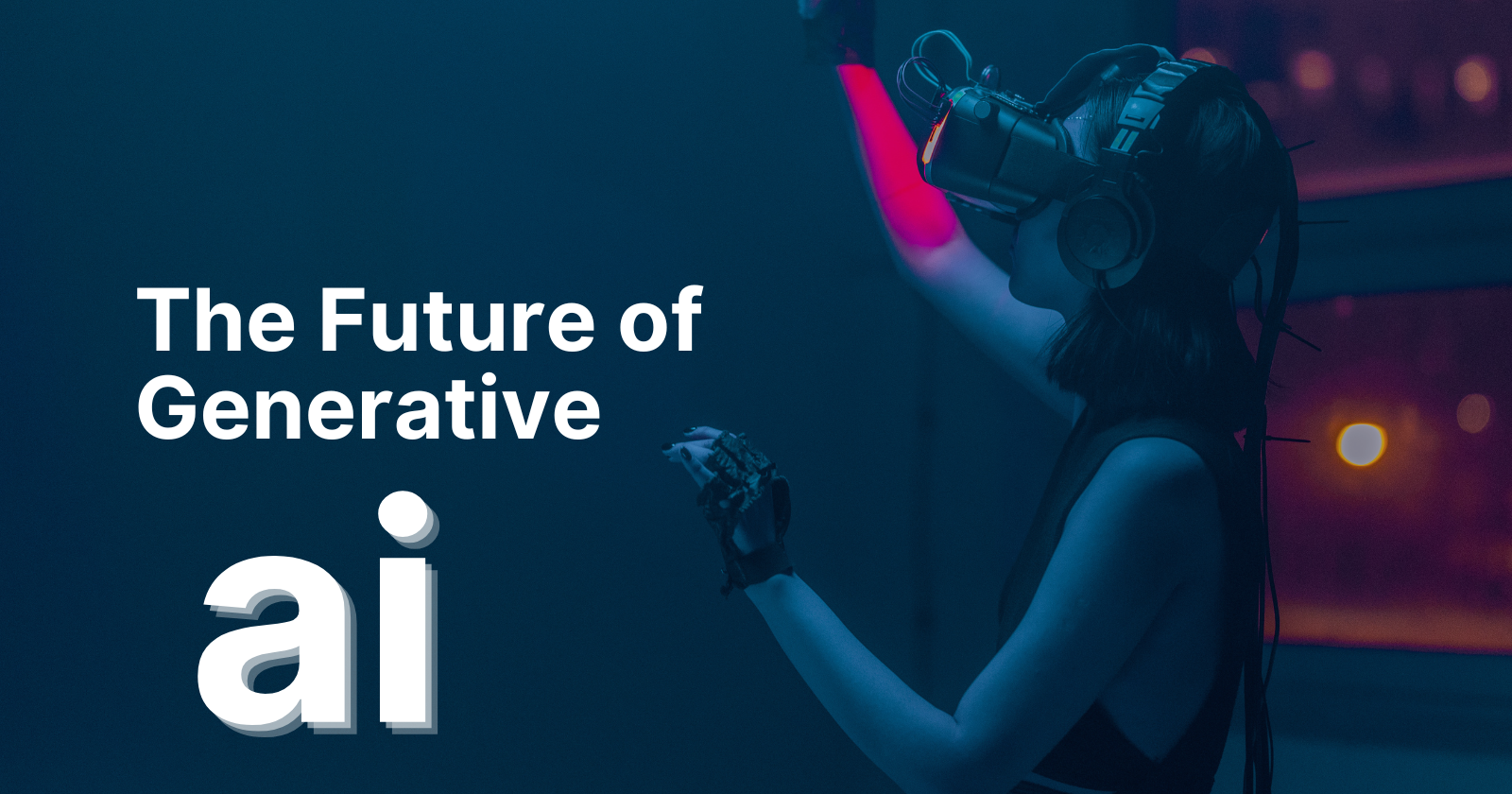The Future of Generative AI
 Priya Sharma
Priya Sharma
Imagine a future where AI isn't just a calculator for complex problems, but an artist – a sculptor of entirely new realities. From composing music that echoes the greats to crafting drugs that target specific diseases with laser focus, generative AI is rapidly transforming the canvas of our world. This powerful technology holds immense potential to breathe life into industries, unlock the boundless wellspring of human creativity, and offer solutions to some of our most pressing challenges. But what exactly is generative AI, and how will it color the strokes of our future?
What is Generative AI?
Generative AI is a subfield of AI focused on creating new data, like images, text, or code. Unlike traditional AI models that analyze and classify existing information, generative models learn the underlying patterns and relationships within data and use that knowledge to produce entirely new outputs.
Think of it like this: Traditional AI is like a librarian, meticulously organizing information. Generative AI, on the other hand, is the author, crafting brand new stories based on what it has learned.
The Generative AI Landscape
The field of generative AI is a vibrant tapestry, constantly evolving and expanding its capabilities. Some of the most prominent threads woven into this tapestry include:
Generative Adversarial Networks (GANs): Imagine two artists locked in a playful competition. One meticulously sculpts new works, while the other tries to discern if they're real. This essence of competition lies at the heart of GANs – two neural networks locked in a battle, leading to incredibly realistic outputs, from eerily believable deepfakes to photorealistic portraits that would fool even the most discerning eye.
Variational Autoencoders (VAEs): Imagine an artist who compresses a vast landscape into a single, intricate sketch, capturing its essence. VAEs work in a similar way, compressing data into a "latent space" – a lower-dimensional representation that captures the data's core characteristics. This allows VAEs to generate entirely new data points that share similar traits with the training data, opening doors to fascinating possibilities.
Large Language Models (LLMs): These are the literary giants of the generative AI world. Trained on mountains of text data, LLMs can generate human-quality writing, translate languages with remarkable fluency, and even dabble in creative writing, crafting different styles and genres with surprising finesse.
The Generative Revolution
Generative AI is poised to disrupt and transform a wide range of industries, leaving its mark on almost every facet of our lives. Here are a few examples:
Drug Discovery: Imagine a world where AI can analyze mountains of molecular data, designing new drugs with targeted functionalities. This could revolutionize the pharmaceutical industry, accelerating the discovery and development of life-saving drugs.
Material Science: Generative models can be used to discover entirely new materials with specific properties, leading to advancements in fields like energy storage and aerospace engineering. Imagine lighter, stronger materials for airplanes, or highly efficient batteries for a greener future.
Creative Industries: From composing music that rivals the masters to writing scripts that captivate audiences, generative AI is becoming a powerful tool for creative professionals. Imagine AI co-writing a song with a musician, or generating 3D models that breathe life into animation projects.
The Human Touch: Collaboration and the Canvas of Ethics
While generative AI offers a vibrant palette of possibilities, it's important to remember that it's a tool, not a replacement for human creativity and ingenuity. The most impactful applications will likely come from a collaborative approach, where humans and AI work together, each leveraging their unique strengths. Imagine a painter wielding a brush alongside a robot that can flawlessly mix and match colors.
Furthermore, the ethical implications of generative AI require careful consideration. Issues like bias in training data, potential misuse of deepfakes, and the impact on jobs need open discussions and clear guidelines. Imagine a masterpiece marred by hidden biases, or a deepfake used to spread misinformation. We need to ensure generative AI paints a future that benefits all.
The Future of Generative AI: Sharpening Your Skills
As generative AI evolves, there will be a growing demand for individuals with a keen understanding of this technology. Here are some skills that will be in high demand:
Generative AI Developers: These are the architects of the future, building, training, and maintaining the generative models that will shape our world.
Data Scientists: These are the data wranglers, the ones who prepare the vast datasets that serve as the raw materials for generative models. Their expertise in data analysis and manipulation will be crucial for shaping the training data that guides the AI's creative direction.
Ethically-Minded Designers: As with any powerful tool, generative AI needs to be wielded with responsibility. These designers will ensure that generative models are built and used in a fair, transparent, and accountable way. Imagine incorporating fairness considerations into the design of an AI that generates loan applications, or ensuring transparency in how AI-generated news articles are labeled.
Getting on the Canvas: Exploring the World of Generative AI
The field of generative AI is a constantly evolving masterpiece, and there are numerous avenues for those interested in exploring its potential. Here are a few ways to get started:
Online Courses: Platforms like Coursera and Udacity offer a wealth of courses on generative AI concepts and applications. These courses can provide a solid foundation for understanding the inner workings of this exciting technology.
Open Source Projects: The world of open source software offers a treasure trove for the curious. Exploring open-source generative AI frameworks like TensorFlow.js or PyTorch can be a fantastic way to gain hands-on experience building and training your own generative models.
Generative AI Certification: Formalizing your knowledge with a generative AI certification can provide a structured learning path and validate your understanding of the field. These certifications can be valuable assets for those seeking careers in this rapidly growing domain.
Conclusion
The generative AI revolution is upon us, and it's fundamentally changing the way we interact with technology and the world around us. By understanding this powerful technology and its potential applications, we can become active participants in shaping its future. Imagine a future where generative AI is used to create art that inspires, solve problems that challenge us, and paint a brighter future for all. The canvas is vast, the potential limitless – let's pick up our brushes and co-create this generative renaissance.
Subscribe to my newsletter
Read articles from Priya Sharma directly inside your inbox. Subscribe to the newsletter, and don't miss out.
Written by

Priya Sharma
Priya Sharma
I am a developer and writer. I am dedicated to providing engaging and informative content to help individuals and organizations stay ahead in the ever-evolving tech landscape. With a strong background in software development and a passion for teaching, I have the skills and experience to break down complex technical concepts and make them accessible to a wide audience. I strive to make sure that my readers leave my blog or course with a deeper understanding of the topics I cover. and I am always looking for new ways to share my knowledge and help others succeed in their tech-related endeavors.